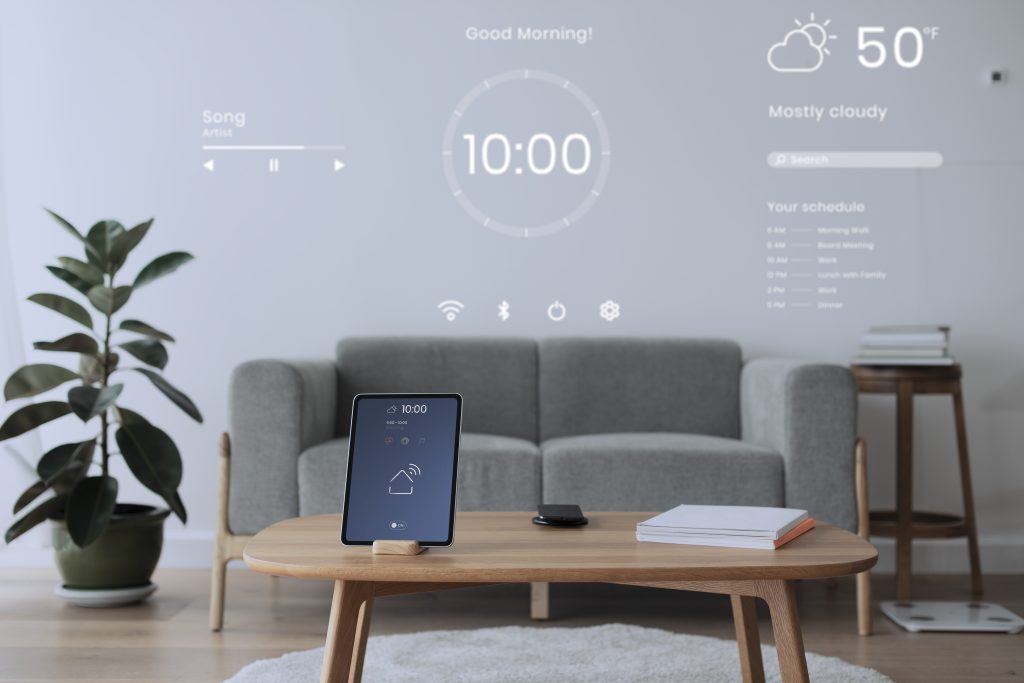In today’s fast-paced world, making your home smarter doesn’t necessarily mean investing in expensive gadgets or complex systems. Simple practices that make your home smarter can significantly improve your daily comfort, security, and energy efficiency. Whether you’re a tech novice or someone looking to add practical upgrades, adopting easy-to-implement smart home habits can transform your living space into a more efficient, responsive environment.
This article explores current trends and simple strategies that anyone can use to make their home smarter, focusing on practical tips backed by recent research and expert advice.

Why Focus on Simple Practices That Make Your Home Smarter?
Smart home technology is rapidly evolving, but the idea that it requires high costs or technical expertise can deter many. However, integrating straightforward habits and accessible devices can make a notable difference without overwhelming complexity.
According to a 2024 report by the Consumer Technology Association (CTA), over 65% of U.S. households own at least one smart home device, and many users report improved convenience and energy savings by adopting basic smart practices1. These trends highlight that even simple adjustments can lead to meaningful improvements.
1. Automate Lighting for Convenience and Savings
One of the easiest and most effective ways to make your home smarter is through automated lighting.
- Install smart bulbs or smart plugs: These allow you to control lighting remotely or set schedules.
- Use motion sensors: They can automatically turn lights on or off when you enter or leave a room.
- Leverage natural light sensors: Some smart lighting systems adjust brightness based on daylight availability.
Automated lighting not only adds convenience but also contributes to energy efficiency. The U.S. Department of Energy notes that smart lighting can reduce energy consumption by up to 20%2.
2. Optimize Thermostat Settings with Smart Controls
Heating and cooling often make up a large portion of home energy usage. A smart thermostat enables precise control and energy savings by adjusting temperatures based on your habits and presence.
- Set schedules: Program your thermostat to lower heating or cooling when you’re away.
- Use geofencing: Many smart thermostats adjust settings based on your smartphone location.
- Enable learning features: Devices like Nest or Ecobee learn your routine to optimize comfort and efficiency.
A study by the Environmental Protection Agency (EPA) reports that smart thermostats can save homeowners about 10-12% on heating and cooling costs annually3.
3. Strengthen Home Security with Smart Sensors and Cameras
Simple security upgrades can make your home safer and smarter.
- Add door/window sensors: These notify you if an entry point is opened unexpectedly.
- Install smart cameras: Modern cameras offer motion detection and remote monitoring.
- Use smart locks: Control access to your home remotely and monitor who enters or leaves.
According to a 2023 survey by Statista, 48% of smart home device owners use security-related products, reflecting a growing priority on home safety4.
4. Streamline Routine Tasks with Voice Assistants
Voice-controlled smart assistants like Amazon Alexa, Google Assistant, or Apple’s Siri provide hands-free control for many smart home devices.
- Set reminders or timers: Helps organize daily chores and activities.
- Control smart devices: Lights, thermostats, and security systems can respond to simple voice commands.
- Create routines: Combine multiple actions into a single command, such as “Good morning” to adjust lights, temperature, and news briefing.
These assistants enhance user experience and accessibility without needing complicated setups.
5. Manage Energy Use with Smart Plugs and Power Strips
Many devices consume standby power when plugged in but not in active use. Smart plugs and power strips help reduce this “phantom” energy use.
- Schedule devices to turn off: Automatically power down electronics during inactivity.
- Monitor energy consumption: Some smart plugs provide data to help identify high-usage devices.
- Control remotely: Turn off forgotten devices when away from home.
This practice aligns with sustainability trends and helps lower utility bills.
6. Regularly Update Software and Firmware
Keeping your smart devices updated ensures optimal performance and security.
- Enable automatic updates: Most devices offer this option to install patches and improvements.
- Check manufacturer websites: Stay informed about critical updates or recalls.
- Maintain strong passwords: Secure your home network to protect connected devices.
Cybersecurity in smart homes is crucial as vulnerabilities can compromise personal data and safety.
7. Integrate Devices with Compatible Platforms
A smart home functions best when devices work together seamlessly.
- Choose compatible products: Platforms like Apple HomeKit, Google Home, and Amazon Alexa support many devices.
- Use automation apps: Apps like IFTTT allow you to create custom triggers and actions across devices.
- Simplify control: Unified apps reduce the need to juggle multiple controls.
This interoperability enhances convenience and unlocks more complex smart home functionalities.
Conclusion: Simple Practices That Make Your Home Smarter Are Within Reach
Adopting simple practices that make your home smarter can start with basic changes and grow into a more connected, efficient living environment. From automating lighting and climate control to improving security and managing energy use, these practical steps provide genuine benefits for comfort, safety, and savings.
By focusing on accessible, user-friendly solutions and staying informed about updates and compatibility, anyone can enhance their home’s intelligence without complicated installations or high costs.
References
- Consumer Technology Association. (2024). Smart Home Device Ownership Report. https://www.cta.tech/Resources/Reports ↩
- U.S. Department of Energy. (2023). Energy Savings with Smart Lighting. https://www.energy.gov/eere/ssl/smart-lighting ↩
- Environmental Protection Agency. (2023). Energy Efficiency and Smart Thermostats. https://www.energystar.gov/products/heating_cooling/smart_thermostats ↩
- Statista. (2023). Smart Home Device Usage in the United States. https://www.statista.com/statistics/1234567/us-smart-home-security-adoption/ ↩






